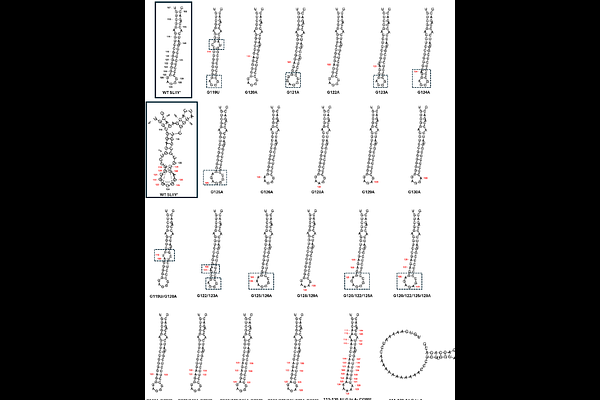A Guanine-quadruplex located on the negative strand of the hepatitis C virus facilitates efficient genomic RNA synthesis

A Guanine-quadruplex located on the negative strand of the hepatitis C virus facilitates efficient genomic RNA synthesis
Dsouza, S.; Tersteeg, S.; Badmalia, M. D.; Chen, A.; Heck, M. S.; van Marle, G.; Corcoran, J. A.; Coffin, C. S.; Patel, T. R.
AbstractGuanine-rich nucleic acids can form a unique secondary structure called Guanine-quadruplexes (G4s). These G4s are conserved across all domains of life and in viruses, where they can play important regulatory roles in the viral lifecycle. In flaviviruses, the (-) strand 3 untranslated region (UTR) is essential for initiating genomic RNA synthesis. Within the (-) strand 3 UTR of hepatitis C virus (HCV), a highly conserved G4 is located within stem-loop IIy (SLIIy), spanning nucleotides 110-131--a region that is essential for efficient replication. Using bioinformatics, we demonstrate that nucleotides 110-131 are highly conserved across HCV genotypes 1-7, and this region within SLIIy can likely adopt a more energetically favorable G4 conformation rather than the predicted hairpin. From biophysical and cell biology experiments, we show that stabilizing the predicted hairpin structure in SLIIy disrupts RNA synthesis, while successive guanine-to-adenine mutations within the G4 sequence impair G4 formation and hinder replication. Combining our findings with prior studies, we propose that the SLIIy G4 plays a crucial role in recruiting NS3 helicase, which is necessary for unwinding RNA structures and facilitating access for NS5B polymerase. The G4 may serve as a regulatory switch that modulates helicase binding and replication efficiency. We propose that in the absence of a stable G4, NS3 recruitment or unwinding is impaired, leading to inefficient RNA unwinding and reduced polymerase activity, ultimately hindering viral replication. These results reveal a previously unrecognized role for G4 structures in the HCV replication cycle, highlighting their importance in regulating (+) strand RNA synthesis.